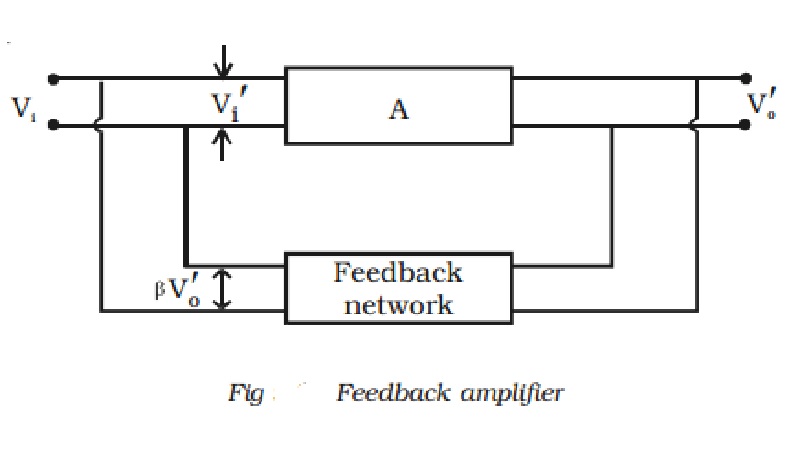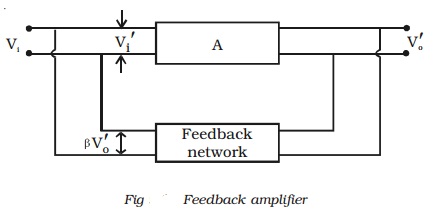Chapter: 11th 12th std standard Class Physics sciense Higher secondary school College Notes
Feedback in amplifiers- Principle of feedback and

Feedback in amplifiers
The characteristics of an
amplifier are highly dependent on transistor parameters like current gain,
input impedance and output impedance etc. The transistor parameters exhibit
variations due to ageing of transistors. Manufacturing processes cause
variations in parameters of transistors of the same type. To overcome any
adverse effect on the overall performance of an amplifier, feedback is used.
Feedback is said to exist in an amplifier circuit, when a fraction of the
output signal is returned or fed back to the input and combined with the input
signal. If the magnitude of the input signal is reduced by the feed back, the
feed back is called negative or degenerative. If the magnitude of the input
signal is increased by the feed back, such feed back is called positive or
regenerative.
Principle of feedback amplifier
For an ordinary amplifier i.e. without feedback, let V0
and Vi be the output voltage and input voltage respectively. If A be
the voltage gain of the amplifier, then
A=Vo/Vi
The gain A is often called as
open-loop gain.
The general theory of feedback can be explained with the help of
block diagram shown in Fig. The feedback amplifier has two parts (i.e)
amplifier and feedback circuit. The feedback circuit usually consists of
passive components (resistor, capacitor, inductor). A fraction (say β) of the output voltage is fed back to the input
through the feedback circuit. Let V′ο be the output voltge with feedback.

Therefore, after feedback the input voltage V1i becomes,
V1i
= Vi + βV1ο ………………(1)
For positive feedback, β is taken as positive. For negative feedback, β is taken as negative.
For positive feedback, the input voltage will be Vi +
βV1ο. When this is amplified A times
by the amplifier, the output voltage after feedback (V1ο) will be A(Vi + βV1ο)
V1ο = A (Vi + βV1ο ) ……………(2)
V1ο (1- βA) = AVi …………………..(3)
Then the voltage gain of the amplifier with feedback is
Af = Vo/Vt = A/1-Aβ ………..(4)
Since |1-Aβ |<1, Af>A The
positive feedback increases the amplifier gain.
For negative feedback, the feedback fraction is - β
Af = A/1-(-Aβ) = A/1+Aβ
Since |1-Aβ |>1, Af<A Therefore negative feedback reduces the
amplifier gain.
The term Aβ is called loop gain and â is called feedback ratio.
Advantages of negative feedback
Following are the advantages of
negative feedback.
(i) Highly stabilised gain.
(ii) Reduction in the noise level.
(iii) Increased bandwidth
(iv)
Increased input impedance and decreased output impedance.
(v)
Less distortion.
Related Topics